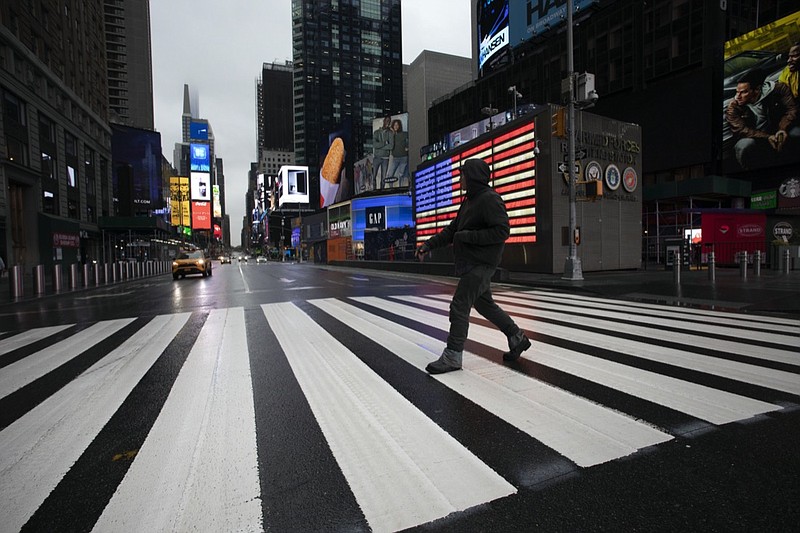Over the weekend J.D. Vance, the author of "Hillbilly Elegy" and now a Trumpist candidate for U.S. senator in Ohio, tweeted that he was planning a visit to New York, which he has heard is "disgusting and violent." Vance, a graduate of Yale Law School who currently works as a venture capitalist, surely knows better. But he presumably hopes that Republican voters don't.
But why do so many Americans still believe that our major cities are hellholes of crime and depravity? Why do so many politicians still believe that they can run on the supposed contrast between urban evil and small-town virtue when many social indicators look worse in the heartland than in the big coastal metropolitan areas?
To be sure, there was a national surge in homicides - although not in overall crime - during the pandemic. But New York is still safer than it was a decade ago, vastly safer than it was 30 years ago, and, for what it's worth, considerably safer than, say, Columbus, Ohio.
And if you wanted to single out some region as being in crisis, New York is hardly the place you'd choose. Our biggest social problems are in the "eastern heartland," an arc running from Louisiana to Michigan. This is where an alarmingly large number of men in their prime working years don't have jobs and where "deaths of despair" - that is, deaths from alcohol, suicide and drug overdoses - are running high.
Notice that I'm not attributing these heartland problems to some kind of moral collapse on the part of the region's residents. The social deterioration of the eastern heartland pretty clearly has economic roots: The rise of a knowledge economy has led to a growing concentration of jobs and wealth in large, highly educated metropolitan areas, leaving much of small-town and rural America stranded. And this loss of opportunity has ended up being reflected in social disintegration, just as the disappearance of jobs did in many inner cities half a century ago.
Strange to say, however, self-proclaimed "populists" like Vance - or Donald Trump - aren't drawing the obvious parallels between the heartland's troubles and those of other Americans at other times, or proposing anything that might improve the situation.
Instead, they're still demagoguing like it's 1975, contrasting an idealized vision of the heartland that bears ever less resemblance to reality with a dark vision of urban life that's decades out of date.
And the mythical contrast between bad big cities and good small towns is having destructive, even deadly effects on policy.
Some reporting suggests that one of the reasons the Trump administration downplayed the COVID-19 pandemic in its early stages was the belief that it was solely a large-city, blue-state problem; there were definitely many assertions that the risk was severe only in places with dense populations.
In reality, COVID-19, although it initially hit New York hard, was in no way a big-city problem; density doesn't seem to have mattered at all. For example, South Dakota has roughly the same population as San Francisco; it has had four times as many COVID deaths. And right now rural, Republican-leaning states have much lower vaccination rates than blue states, so that if there is another wave of infections it will turn the myth of cities as hotbeds of disease on its head.
Besides helping to cripple our pandemic response, the myth of rural virtue and urban vice means that many Republican voters seem unaware that they are among the major beneficiaries of the "big government" their party says it wants to eliminate. That is, they still imagine that the government spends money on urban welfare recipients, not on people like them.
For example, do red-state voters know that federal spending in their states - much of it taking the form of benefits from Social Security and Medicare - greatly exceeds the taxes they pay to Washington? In Kentucky, the most extreme example, the annual inflow of federal money per capita is $14,000 greater than the outflow.
If voters knew this, would they be so willing to support efforts to cut benefits for working Americans while slashing taxes on corporations and the wealthy?
Just to be clear, I'm not criticizing policies that in effect subsidize many states. We're all Americans, and we should be willing to help each other out.
The problem, instead, lies with cynical politicians who disparage some parts of the country and suggest that those regions aren't part of the "real America." That cynicism has effectively killed thousands of people in the pandemic - and it could, all too easily, end up killing democracy.
The New York Times
